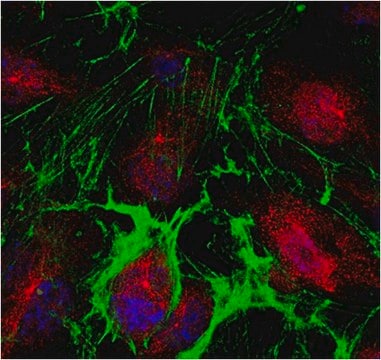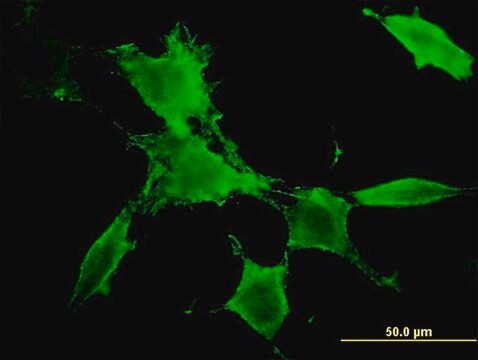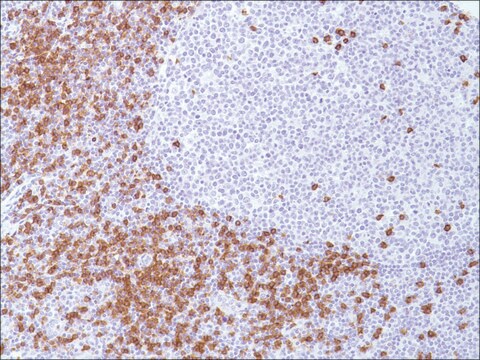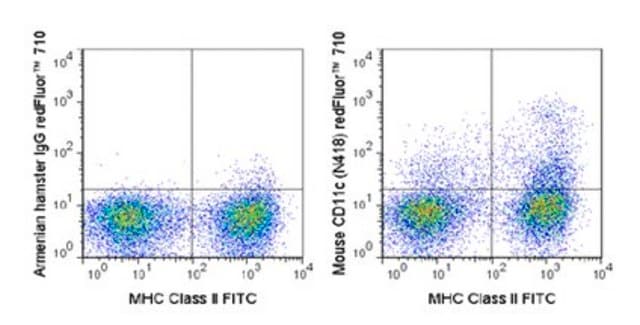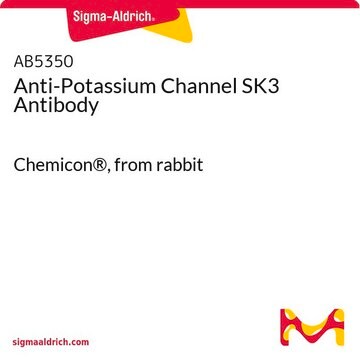MABF374
Anti-CD11c Antibody (mouse), FITC, clone N418
clone N418, 0.5 mg/mL, from hamster(Armenian)
Sinônimo(s):
Integrin alpha-Xl, CD11 antigen-like family member C, Leukocyte adhesion glycoprotein p150,95 alpha chain, Leukocyte adhesion receptor p150,95, CD11c
About This Item
Produtos recomendados
fonte biológica
hamster (Armenian)
Nível de qualidade
conjugado
FITC conjugate
forma do anticorpo
purified antibody
tipo de produto de anticorpo
primary antibodies
clone
N418, monoclonal
reatividade de espécies
mouse
concentração
0.5 mg/mL
técnica(s)
flow cytometry: suitable
immunofluorescence: suitable
immunohistochemistry: suitable
immunoprecipitation (IP): suitable
Isotipo
IgG
nº de adesão UniProt
Condições de expedição
wet ice
modificação pós-traducional do alvo
unmodified
Informações sobre genes
mouse ... Itgax(16411)
Categorias relacionadas
Descrição geral
Imunogênio
Aplicação
Inflammation & Immunology
Qualidade
Flow Cytometry Analysis: 0.25 µg of this antibody detected CD11c in one million C57Bl/6 splenocytes.
forma física
Armazenamento e estabilidade
Exoneração de responsabilidade
Not finding the right product?
Try our Ferramenta de seleção de produtos.
Código de classe de armazenamento
12 - Non Combustible Liquids
Classe de risco de água (WGK)
nwg
Ponto de fulgor (°F)
Not applicable
Ponto de fulgor (°C)
Not applicable
Certificados de análise (COA)
Busque Certificados de análise (COA) digitando o Número do Lote do produto. Os números de lote e remessa podem ser encontrados no rótulo de um produto após a palavra “Lot” ou “Batch”.
Já possui este produto?
Encontre a documentação dos produtos que você adquiriu recentemente na biblioteca de documentos.
Nossa equipe de cientistas tem experiência em todas as áreas de pesquisa, incluindo Life Sciences, ciência de materiais, síntese química, cromatografia, química analítica e muitas outras.
Entre em contato com a assistência técnica